Posted by Elena del Valle on October 4, 2006
By Tony Malaghan
CEO, Arial International
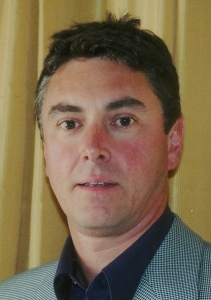
Tony Malaghan, CEO, Arial International
Photo: Tony Malaghan
In a previous article, Business Spanish Call Center Certification –Improving Customer Satisfaction, I talked about the differences between Hispanic customer care and the general market and how this impacts your call center operation. I also looked at the areas of your operation that need to be addressed in a Business Spanish Call Center Certification program. Typically, as with most business decisions, deciding to certify your call center comes back to ROI. In this article I have attempted to address some common questions raised and the resultant benefits to certification.
Should my call center be certified?
The disadvantage that many call center managers have in a bilingual operation today is that senior managers only speak English. This leaves them at a great disadvantage and at the mercy of vendors such as translation companies, recruiters, etc., and their bilingual staff to manage and gauge the operations’ performance, compliance, and customer satisfaction. It is impossible to effectively manage an operation if you don’t have all the information and the consequences can be very damaging to your brand and customer base.
Click here to read the complete article
Hispanic Marketing and Public Relations book

To purchase a copy of the Hispanic Marketing & Public Relations book featuring “Effective Translations,” a chapter by Tony Malaghan, CEO, Arial International visit the HispanicMPR.com Resoures Section
Posted by Elena del Valle on September 27, 2006
By Elena del Valle, MBA
Principal, LNA World Communications
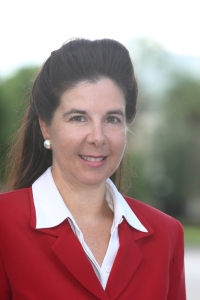
Elena del Valle, MBA
Photo: Cristian Lazzari
You are a spokesperson for your company, representing it for public speaking and media interviews. You are going about your everyday affairs, granting media interviews on a new product or service your company launched or a timely topic of general interest. All is going well and a Hispanic media representative calls. What should you do?
Should you respond to the request as you do with other general market requests? If you are wondering about the reach and importance of Latino media and Latino audiences nationwide, note that Hispanic buying power is estimated at around $700 billion a year and increasing rapidly. At the risk of stereotyping, remember Latinos are loyal buyers, especially for high ticket items, spend more than mainstream and other minority market buyers on basic products and like to purchase the best they can afford.
Click here to read the complete article
“Latino Media and Hispanic Media Training” audio recording


Presenters Federico Suverbi, Ph.D. and Elena del Valle, MBA
To purchase a downloadable or CD audio recording with presentations on Hispanic media training by Elena del Valle and on Latino media by Federico Subervi, Ph.D. visit the HispanicMPR.com Resources Section
Posted by Elena del Valle on September 25, 2006
Click here to sponsor a HispanicMPR.com podcast

Roger Selbert, Ph.D., principal, The Growth Strategies Group
A podcast interview with Roger Selbert, Ph.D., a principal of The Growth Strategies Group, is available in the Podcast Section of Hispanic Marketing & Public Relations, HispanicMPR.com. During the podcast, Roger discusses his chapter in the Hispanic Marketing & Public Relations book with Elena del Valle, host of the HispanicMPR.com podcast.
Roger, touted as one of the best-known and most respected trend experts in the United States, is a contributing author of the chapter entitled “Hispanic Projections” in the Hispanic Marketing & Public Relations book. He is editor and publisher of Growth Strategies and a senior fellow at the La Jolla Institute. He indicates that as a business futurist, his 20-year track record of economic, social and demographic foresight is unequalled.
To listen to the interview, scroll down until you see “Podcast” on the right hand side, then select “HMPR Roger Selbert, Ph.D.,” hit the play button or download it to your iPod or MP3 player to listen on the go, in your car or at home. To download it, click on the arrow of the recording you wish to copy and save to disk. The podcast will remain listed in the September 2006 section of the podcast archive.
Click the button to hear the podcast:
Click here to sponsor a HispanicMPR.com podcast
“Hispanic Projections” audio recording

Presenter Roger Selbert, Ph.D.
To purchase a downloadable or CD audio recording with a presentation by Roger Selbert, Ph.D. on “Hispanic Projections” visit the HispanicMPR.com Resources Section
Posted by Elena del Valle on September 13, 2006
By Tony Malaghan, CEO, Arial International

Tony Malaghan, CEO, Arial International
Photo: Tony Malaghan
In today’s highly competitive marketplace, call centers are taking steps to provide best-in-class service. If your company is servicing multilingual customers, it is reasonable they would expect to receive excellent service in whatever language they speak. For those servicing US Hispanic customers, only the largest or most specialized companies are able to staff call center representatives to handle all their calls in one language. Most bilingual call center customer service, telemarketing and collection agents in the US handle both English and Spanish calls randomly throughout the day so that companies can meet service level goals, schedule enough agents during peak times and optimize the use of inbound and outbound call center technology. Therefore, these call center agents must be able to competently communicate and be proficient in both languages in the specialized vocabulary of your industry.
Before we begin to address Business Spanish Call Center Certification, let’s first look at one of the most common issues raised by call center managers when talking about the US Hispanic market: call duration, which highlights one of the many differences between this market and the general market. Most managers are aware that Spanish calls tend to last longer, but few are aware of the variety of reasons this occurs:
Click here to read the complete article
Hispanic Marketing and Public Relations book

To purchase a copy of the Hispanic Marketing & Public Relations book featuring “Effective Translations,” a chapter by Tony Malaghan, CEO, Arial International visit the HispanicMPR.com Resoures Section
Posted by Elena del Valle on September 7, 2006
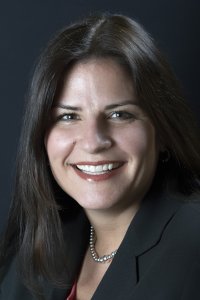
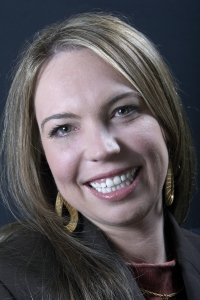
Brenda Hurley and Liria Barbosa discuss the Latino family
Photos: Brenda Hurley, Liria Barbosa
There are 42 million Latinos living in the United States, and one out of every four children is of Hispanic descent. Latino market researchers Brenda Hurley, vice president of C & R Research, and Liria Barbosa, senior research analyst of C & R Research, provide insights and information on Latino family culture in the recently released online recording “Latino Family Dynamics.” Hurley and Barbosa recorded “Latino Family Dynamics” in March 2006 with HispanicMPR.com host Elena del Valle. The two-hour recording is available for download as an MP3 file in the Resources Section of HispanicMPR.com for $69.95 and $89.95 on CD and delves into the Latino family culture.
“Understanding the Latino family dynamic helps you understand where opportunities lie. For example, Hispanic households are larger than non-Hispanic households, therefore they index higher on purchasing items such as soap and detergent,” said Hurley. “Family is at the heart of the Latino household, therefore, they make an effort to do things together as a family and get together with extended family regularly and for special celebrations.”
For “Latino Family Dynamics,” Hurley and Barbosa used different research methods, consisting of demographic statistics obtained through the U.S. Census and interview techniques including surveys. They also used photojournalism photographing Hispanic family households and a wide variety of their celebrations.
“As the Hispanic population grows, the bicultural segment of the population is also growing. Due to globalization, Internet and Cable TV, the newly arrived are acculturating at a faster rate,” said Barbosa. “Those who are fully acculturated have also developed an interest for learning about their roots and therefore start retro-acculturating. In certain areas of the country, such as many cities in Texas and Miami, Hispanics are the majority of the population. In those areas, the Hispanic culture is very intertwined with mainstream culture. Spanish language radio is more popular than English, the typical meals are a fusion of the Hispanic and American foods and common Spanish words are used on an everyday basis along with English.”
Hurley and Barbosa discuss several topics regarding Latino families. Among the topics included are adapting general market messages when targeting Latinos, educational differences between U.S. born and foreign born Latinos, their purchasing habits, their family characteristics, their extended families, family responsibilities, identifying the decision maker and information provider within a family, family activities, interaction between generations, impact of acculturation on the family, and future trends.
“Diversity exists even inside the typical U.S. Hispanic household. It is not uncommon for different members of the household to have different nationalities, language preferences and language proficiency,” said Barbosa.
Barbosa is a graduate of the Burke Institute Intensive Moderator Training Program, and has a Bachelor of Science degree in Business Administration. She has headed projects including initial design, recruitment, execution, moderation, analysis and final written reports. Hurley has provided custom research solutions for her clients utilizing online and offline methodologies. Her involvement in the development of CRIMSON (C & R’s Multimedia Surveying Network) enabled her to design and execute studies using the system. Barbosa and Hurley work for Latino Eyes, a division of C & R Research. — Sergio Carmona
“Latino Family Dynamics” audio recording


Brenda Hurley and Liria Barbosa
To purchase a downloadable or CD audio recording with extended information on Latino Family Dynamics by Brenda Hurley and Liria Barbosa visit the HispanicMPR.com Resources Section.
Posted by Elena del Valle on August 28, 2006
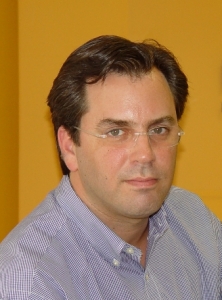
Matias Perel, founder and president, Latin3
Photo: Latin3
A podcast featuring an interview with Matias Perel, founder and president, Latin3, is available in the Podcast Section of Hispanic Marketing & Public Relations, HispanicMPR.com. During the podcast, Matias discusses online search marketing to Hispanics with Elena del Valle, host of the HispanicMPR.com podcast.
Matías founded Latin3 in 2000. Since then he has led the company to a leading position among interactive marketing agencies in the U.S. and Latin America. He has a 10-year professional track record in the U.S. and Latin American advertising industries.
A native of Argentina, he has lived and worked in the U.S. for many years gaining knowledge of the Hispanic and Latino communities. Matias is invited to participate in seminars and conferences in the region and is frequently interviewed on CNN en Español.
Matias, a past board member of the Miami chapter of the International Advertising Association, serves on the Hispanic Committee of the Internet Advertising Bureau. He is also enrolled in the business graduate program at Harvard Business School.
As president of Latin3, Matias is charged with leading the company while working with clients to assist them to gain e-strategic advantage in the U.S. Hispanic and Latin American regions. Some of Latin3’s clients include Cisco Latin America, Dell Latin America, Lexicon, Microsoft Latin America, Nextel International, Pepsi Latin America & USH, Reebok, Sony Latin America, Sunbeam Latin America, TACA Airlines, Visa International, and Xerox.
To listen to the interview, scroll down until you see the “Podcast” on the right hand side, then select “HMPR Matias Perel” hit the play button or download it to your iPod or MP3 player to listen on the go, in your car or at home. To download it, click on the arrow of the recording you wish to copy and save to disk. The podcast will remain listed in the August 2006 section of the podcast.
Click the button to hear the podcast:
Click here to sponsor a HispanicMPR.com podcast
“Search Engine Marketing to Hispanics” audio recording

Presenter Matias Perel, founder and president, Latin3
To purchase a downloadable or CD audio recording presentation and discussion with extended information on search engine marketing to Hispanics by Matias Perel visit the HispanicMPR.com Resources Section
Posted by Elena del Valle on August 16, 2006
By Elena del Valle, MBA, principal, LNA World Communications

Elena del Valle, MBA, principal, LNA World Communications
As part of a national or international franchise chain, franchisee stores are often required to meet certain contractual obligations and standards, offer a set line of products or services, purchase from specific vendors, display pre-approved materials and have a company “look.” In exchange for their compliance with those obligations they reap the benefits of the larger company and its support in the form of an established brand name, negotiated wholesale prices, corporate training, and other advantages that drive their business model.
In spite of the corporate franchise advantages at the end of the day franchisees are responsible for their business success and building a strong customer base. To do this they must understand their local market base and cater to it. For many businesses, especially those offering products and services catering to young audiences, Latinos represent a highly desirable market because they have growing buying power, demonstrate elevated brand loyalty and are superior consumers, spending a higher than average percentage of their income on certain items.
Click here to read the complete article
Posted by Elena del Valle on August 2, 2006

Matias Perel, founder and president, Latinthre3
Photo: Latinthre3
Marketers who want to discover how to target Hispanics with search engine marketing now have the opportunity to listen to an online presentation, “Search Engine Marketing to Hispanics” on HispanicMPR.com. Matias Perel, Latinthre3 founder and president, provides insights into search engine marketing targeting Hispanics during a 37-minute presentation. A 51-minute interview with Perel is also included as well as instructions to download the file in MP3 format. The presentation and interview are available for purchase on the HispanicMPR.com Resources Section for $89.95 in a downloadable format and $119.95 on CD.
“I think listeners can learn what are the challenges about targeting Hispanics through search engine marketing,” said Perel. “The goal is to communicate how to market to Hispanics by taking advantage through search engine marketing.”
In “Search Engine Marketing to Hispanics,” Perel describes what makes search engine marketing valuable to reach the young and fast growing Latino online consumer market. He discusses topics that include language and cultural diversity, trademark terms, local targeting, and the search engine optimization challenge. He also covers the general characteristics of 16 million Latino online users, types of online access among Hispanics, language preferences of Latino online users, and income levels of Hispanic online users.
A Hispanic market expert, Perel is a past board member of the Miami chapter of the International Advertising Association and has served on the Hispanic committee of the Internet Advertising Bureau. He has also been invited to participate in seminars and conferences in his native country of Argentina and is frequently interviewed on CNN en Español.
“Search Engine Marketing to Hispanics,” is the latest addition to the HispanicMPR.com Resources Section launched in April 2006. Initial offerings include presentations by experts and leaders in the field. Michele Valdovinos, vice president of research and marketing, Phoenix Cultural Access Group, and co-author of a chapter titled “A Snapshot of the U.S. Hispanic Market” and Elena del Valle, MBA, principal, LNA World Communications, and editor of the Hispanic Marketing & Public Relations book present “Hispanic Market Overview.” Dora O. Tovar, MPA, president, Tovar Public Relations, and contributing author of the “Hispanic Public Relations and Its Emergence as an Industry” chapter presents “The Next Step: Secondary Latino Markets.”
Federico Subervi, Ph.D., professor at the School of Journalism and Mass Communication, Texas State University-San Marcos and co-author of the “Latino Media: A Cultural Connection” chapter and del Valle, contributing author of the “Cultural Understanding Key to Effective Media Training” chapter present “Latino Media and Hispanic Media Training.” Joel Bary, CEO and board member of LatinMedios.com, Alex Carvallo, U.S. Hispanic media manager for Consumer Marketing at Intel Americas, and Perel discuss “Marketing to Hispanics Online.” Additional information is available online at HispanicMPR.com . — Sergio Carmona
Posted by Elena del Valle on July 26, 2006
By Astrid Rial, president, Arial International

Astrid Rial, president, Arial International
Photo: Arial International
Companies who are hiring bilingual talent to service U.S. Hispanic customers are seeking employees who are able to effectively communicate in “Business Spanish” so that they can deliver products and services to Spanish-speaking customers. However, confirming that job candidates are fluent in verbal and/or written English and Spanish is a challenge if the recruiter is not fully bilingual.
Many Spanish speakers in the U.S. speak colloquial Spanish. They are able to converse across the dinner table, but they lack the vocabulary or knowledge of grammar, syntax or verb conjugation rules to conduct a business conversation in Spanish. Unless the interviewer is fully fluent in both languages, recruiters find it difficult, if not impossible, to distinguish between casual and business Spanish-speakers. For companies who offer differential pay for bilingual language skills, the recruiter has the additional responsibility of ensuring the candidate’s verbal communication and/or writing skills are professional and appropriate for a business environment.
Click here to read the complete article.
Posted by Elena del Valle on July 25, 2006

Joel Bary, CEO, LatinMedios.com and presenter “Marketing to Hispanics Online”
Photo: LatinMedios.com
Online marketing enthusiasts now have the opportunity to listen to a presentation and several interviews covering the Hispanic online marketing boom on their computer or MP3 player with “Marketing to Hispanics Online.” The four-hour recording includes a downloadable 50-minute presentation by Joel Bary, CEO and board member of LatinMedios.com, as well as interviews on the topic with Bary, Matias Perel, founder and president of Latinthre3, and Alex Carvallo, media manager for Consumer Marketing at Intel Americas.
“It’s an educational event on how to hold online media plans for Hispanics,” said Bary about his presentation.” It includes a lot of basic concepts on what to do and what not to do for online Hispanic marketing. It offers a lot of insight on how to reach Hispanics and what options are available, aside from the obvious ones like Univision, and how you as a planner can use the options that are available.”
“Marketing to Hispanics Online” covers the 16 million Latino online market. Four separate downloadable audio recordings, also available on CD, provide listeners detailed information such as gender of users; how to reach Hispanic urban youth online; what percentage of their Hispanic market budget marketers are dedicating to online efforts; areas where Latino online users rate higher than mainstream online users; what Spanish language websites Latinos prefer; and what percent of Hispanics access the Internet through their cell phones.
Bary’s presentation was recorded last month. It and the three additional discussion recordings available for download by clicking on the links at HispanicMRP.com. It costs $169.95 and $199.95 on CD, and provides instructions on how to download the file to an MP3 player.
Three additional audio presentations are available in the HispanicMPR.com Resources Section: “Hispanic Market Overview” with HispanicMPR.com Editor Elena del Valle and Michelle Valdovinos; “The Next Step: Secondary Latino Markets” with Dora O. Tovar, MPA; and “Latino Media and Hispanic Training” with Federico Suverbi, Ph.D. and del Valle. Additional information is available online at HispanicMPR.com — Sergio Carmona

























